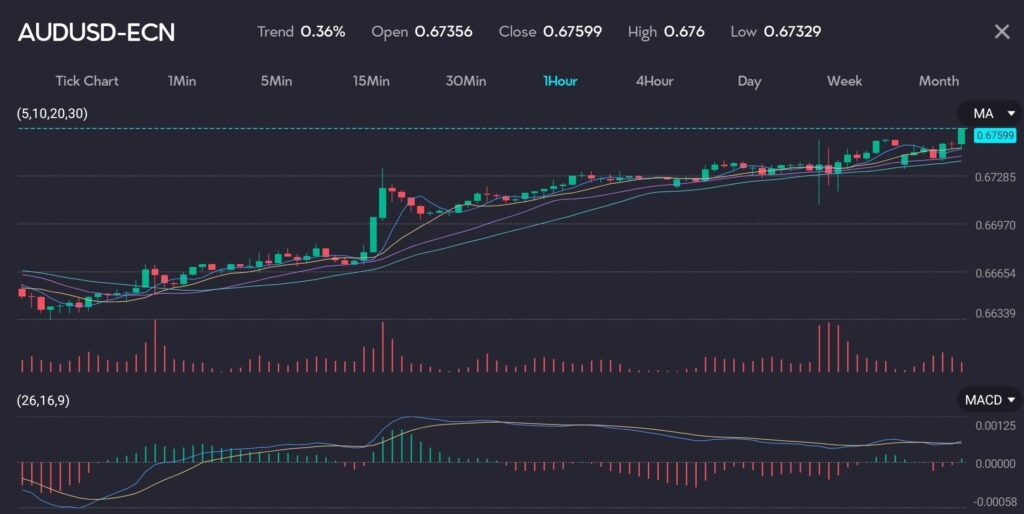Key points
- Australian dollar (AUD) nears a six-month high, supported by yield differentials.
- New Zealand dollar (NZD) awaits central bank policy decisions, impacting market sentiment.
On Monday, the Australian dollar (AUD) hovered close to a six-month high, driven by favorable yield differentials. The AUDUSD stood at $0.6746, having surged 1.2% last week to $0.6753, its highest since early January.

SEE: The Aussie experiences an upswing with a positive trend of 0.36% on the VT Markets app
This rise was mainly attributed to an increase in the U.S. jobless rate, which heightened the likelihood of a Federal Reserve rate cut in September. The possibility of a dovish turn by the Federal Reserve has been a tailwind for the AUD, with the next major target at $0.6871, following its breakout from the recent range of $0.6576 to $0.6705.
Carry trade demand
Against the low-yielding Japanese yen, both the Australian and New Zealand dollars remained robust. The AUDJPY was at 108.26 yen, while the NZDJPY traded at 98.55 yen, driven by persistent carry trade demand.
The strength of the Australian dollar is further supported by contrasting rate expectations between the U.S. and Australia. With the Federal Reserve expected to lower rates, the risk of another rate hike in Australia persists.
This divergence has pushed local yields higher than those in the U.S. On Monday, the yields on 10-year Australian government bonds (AU10Y) fell by 4 basis points to 4.376%, yet the spread to U.S. Treasuries remained at +7 basis points, a significant shift from -30 basis points in April.
What to expect for the Kiwi
In contrast, the New Zealand dollar (NZD) traded cautiously at $0.6145, having reached $0.6171 earlier in the session. It faces resistance around $0.6222, after gaining nearly 1% last week. The upcoming Reserve Bank of New Zealand policy meeting on Wednesday is expected to keep rates steady at 5.5%.
Traders will closely analyse the central bank’s statement for insights on the economy, especially after recent data indicated a softer economic outlook.
In contrast, the Australian dollar’s recent rally against the kiwi (AUDNZD) has lost momentum, stabilising at NZ$1.0979 after peaking at NZ$1.1010 on Friday.
In the short term, the Australian dollar’s trajectory will likely be influenced by further developments in the U.S. labor market and the Federal Reserve’s policy stance.
Similarly, the New Zealand dollar will react to the Reserve Bank of New Zealand’s economic outlook and any shifts in monetary policy expectations.









